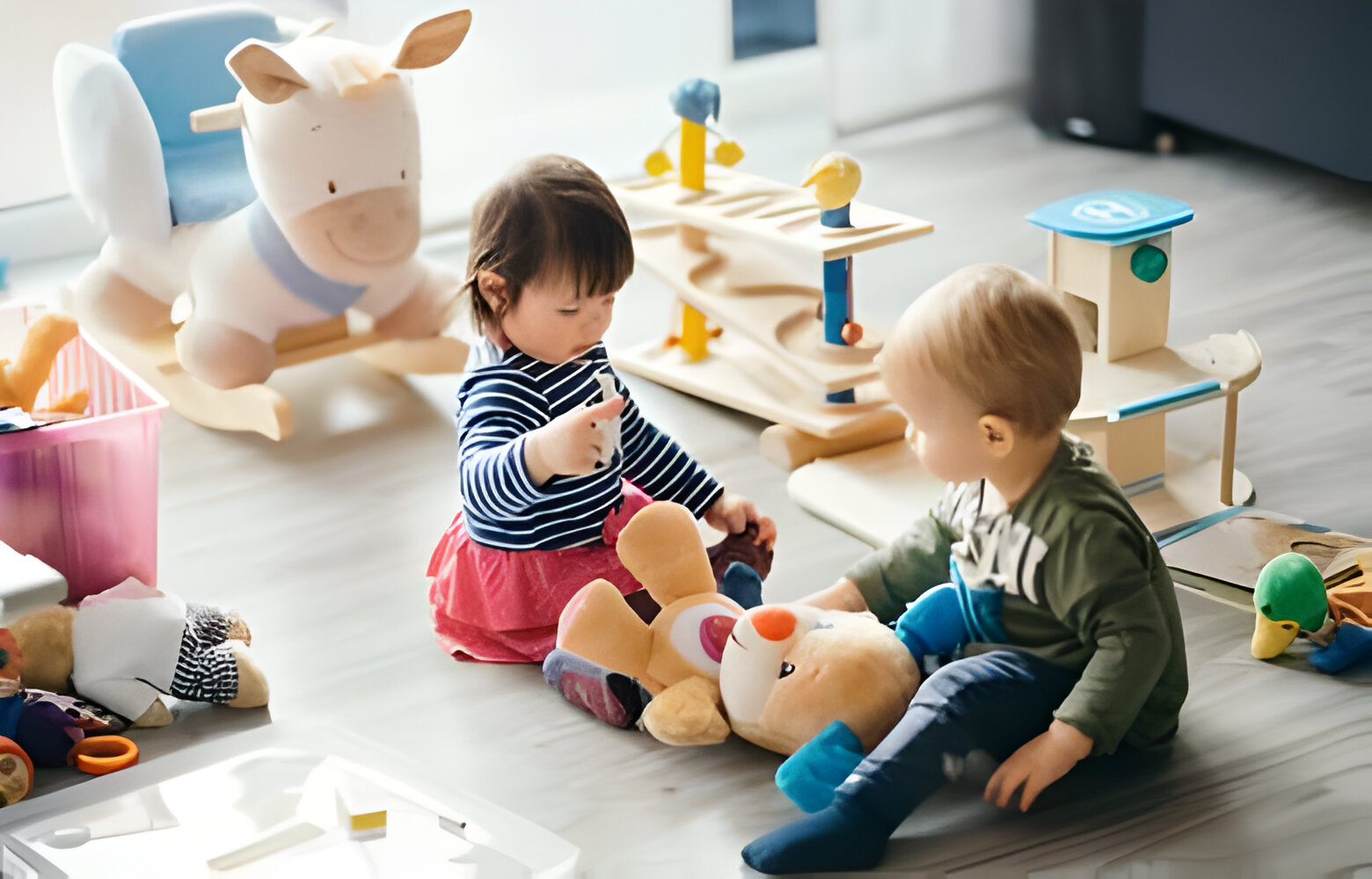Play is not just an enjoyable pastime for children; it is a fundamental aspect of their development. Through play, children learn, explore, and make sense of the world around them. It is through play that they develop essential skills and abilities that will shape their future. One of the key tools in this process is toys. Toys play a crucial role in promoting learning and development in children. In this article, we will delve into the science of play and explore how children’s toys foster learning and development.
The Importance of Play in a Child’s Development
Play is not simply a way for children to pass the time; it is a critical component of their overall development. Through play, children engage in activities that help them develop physically, cognitively, socially, and emotionally. Play allows children to practice and refine their motor skills, build their problem-solving abilities, and enhance their creativity and imagination.
In addition to these cognitive benefits, play also plays a crucial role in children’s social and emotional development. When children engage in cooperative play, they learn to take turns, negotiate, and resolve conflicts. Through imaginative play, children develop empathy, learn to understand different perspectives, and explore their emotions.
How Toys Contribute to a Child’s Learning
Toys are more than just objects to keep children entertained; they are powerful tools for learning. Well-designed toys can stimulate a child’s curiosity, encourage exploration, and promote problem-solving skills. When children interact with toys, they are actively engaged in a process of discovery and learning.
Toys provide children with opportunities to experiment, make choices, and learn from their mistakes. Building blocks, for example, allow children to explore concepts such as balance, gravity, and spatial relationships. Puzzles encourage children to think critically, develop their problem-solving skills, and improve their hand-eye coordination.
Types of Toys That Promote Cognitive Development
Certain types of toys are particularly effective in promoting cognitive development in children. Construction toys, such as building blocks and magnetic tiles, promote spatial awareness, problem-solving, and logical thinking. These toys allow children to experiment with different structures and learn about cause and effect.
Puzzles are another excellent toy for cognitive development. They challenge children to think critically, analyze patterns, and develop their problem-solving abilities. Jigsaw puzzles, in particular, promote visual and spatial awareness, as children need to fit the pieces together to create a complete picture.
Another type of toy that promotes cognitive development is educational games. These games can be both fun and educational, helping children learn essential skills such as math, language, and logic. Board games, for example, teach children about turn-taking, strategy, and decision-making.
Toys That Enhance Fine Motor Skills and Hand-Eye Coordination
Fine motor skills and hand-eye coordination are essential for a child’s overall development. These skills enable children to perform everyday tasks, such as writing, tying shoelaces, and using utensils. Certain toys can help enhance these skills and promote their development.
Building toys, such as Lego or Duplo blocks, require children to manipulate and assemble small pieces. This activity helps improve their hand-eye coordination and fine motor skills. Playing with playdough or clay also strengthens the muscles in the hands and fingers, promoting dexterity and coordination.
Art materials, such as crayons, markers, and paintbrushes, also play a crucial role in developing fine motor skills. These tools require precise movements and control, helping children refine their hand-eye coordination and manual dexterity.
The Role of Imaginative Play in Children’s Social and Emotional Development
Imaginative play is a vital aspect of children’s social and emotional development. When children engage in imaginative play, they have the freedom to explore different roles, scenarios, and emotions. This type of play allows children to practice social skills, develop empathy, and express their thoughts and feelings.
Through imaginative play, children learn to take on different perspectives and understand the world from various viewpoints. They learn to negotiate, cooperate, and resolve conflicts as they interact with others in their pretend play scenarios. Imaginative play also offers a safe space for children to explore and express their emotions, helping them develop emotional intelligence.
Choosing Age-Appropriate Toys for Optimal Learning
When selecting toys for children, it is essential to choose age-appropriate options that align with their developmental stage. Age-appropriate toys are designed to meet a child’s specific needs and abilities, ensuring optimal learning and development.
For infants and toddlers, toys that stimulate their senses and promote exploration are ideal. Soft toys, rattles, and sensory balls encourage sensory exploration and hand-eye coordination. As children grow older, toys that promote problem-solving, creativity, and social interaction become more suitable.
It is also essential to consider a child’s individual interests and preferences when choosing toys. Children are more likely to engage and learn from toys that capture their attention and spark their curiosity. By selecting toys that align with a child’s interests, parents and caregivers can foster a love of learning and encourage active engagement.
The Benefits of Open-Ended Toys for Creativity and Problem-Solving
Open-ended toys are those that can be used in multiple ways and encourage children to use their imagination and creativity. Unlike toys with a single purpose or limited possibilities, open-ended toys offer endless opportunities for exploration, problem-solving, and imaginative play.
Building blocks, for instance, are open-ended toys that can be used to construct towers, houses, or anything a child can imagine. These toys promote creativity, spatial awareness, and critical thinking as children experiment and problem-solve to create their designs.
Art materials, such as paper, crayons, and paint, are also open-ended toys that allow children to express their creativity and imagination. With these materials, children can create their own stories, drawings, and artwork, fostering self-expression and developing problem-solving skills.
Incorporating Educational Toys into Everyday Activities
To make the most of children’s learning potential, it is essential to incorporate educational toys into everyday activities. By integrating toys into daily routines, parents and caregivers can create opportunities for learning and skill development.
For example, during mealtime, parents can use stacking cups or colorful utensils to encourage fine motor skills and hand-eye coordination. Bath time can be transformed into a sensory experience with water toys that promote exploration and cognitive development.
When going for a walk, parents can bring along a magnifying glass or a nature guidebook to encourage children’s curiosity and observation skills. By integrating educational toys into everyday activities, parents can make learning a seamless and enjoyable part of their child’s daily life.
The Impact of Technology on Children’s Play and Learning
In today’s digital age, technology has become an integral part of children’s play and learning experiences. While technology offers new possibilities and opportunities, it is crucial to strike a balance and ensure that technology is used in a way that enhances children’s development.
Educational apps and interactive learning games can provide valuable learning experiences. These digital tools can promote cognitive skills, language development, and problem-solving abilities. However, it is essential to monitor screen time and ensure that technology does not replace other important aspects of play and learning, such as social interaction and physical activity.
Conclusion: The Power of Play in Shaping a Child’s Future
Play is more than just fun; it is a vital component of a child’s development. Through play, children learn and develop essential skills that will shape their future. Toys play a crucial role in fostering learning and development in children, promoting cognitive, social, emotional, and physical development.
By choosing age-appropriate toys, incorporating educational toys into everyday activities, and balancing the use of technology, parents and caregivers can harness the power of play to support their child’s growth and learning. So, let us encourage children to play, explore, and learn, recognizing the transformative impact that play can have on their future.

